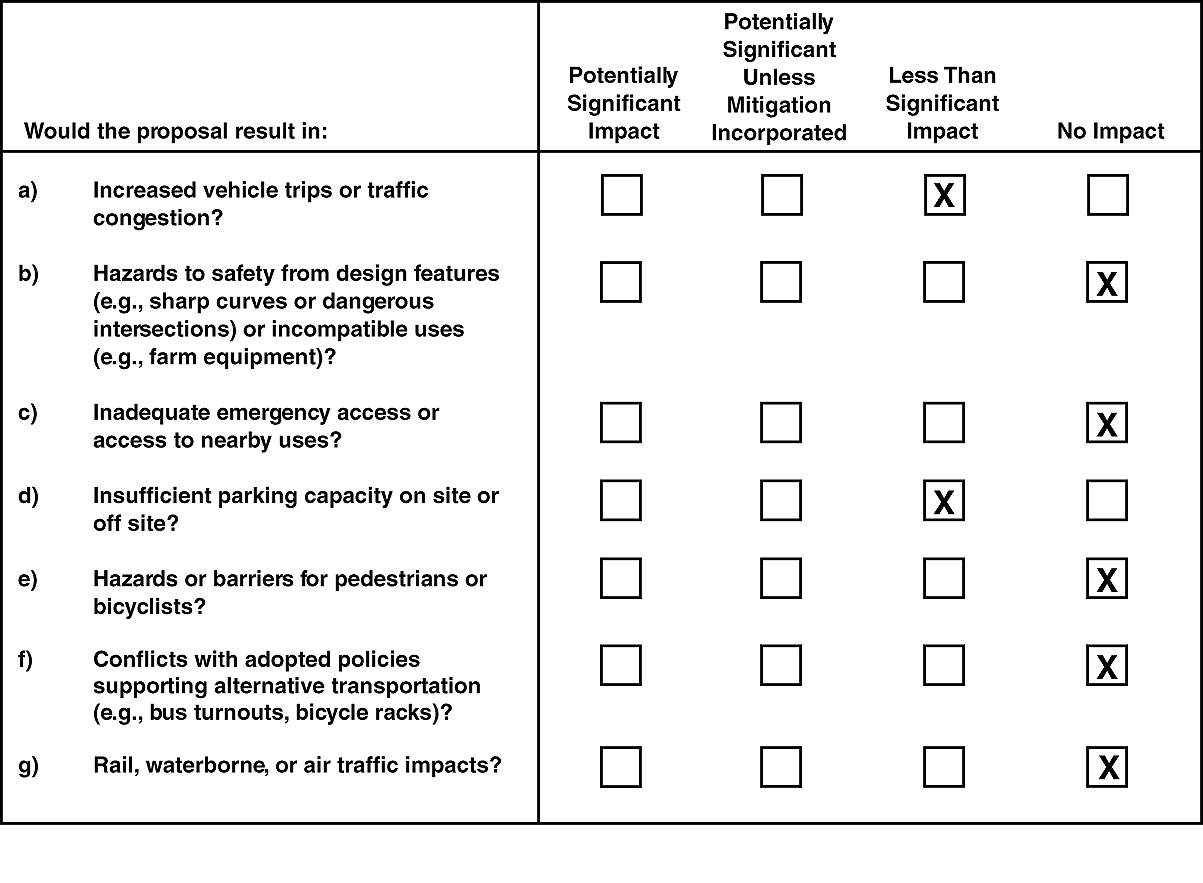
4.6 TRANSPORTATION/CIRCULATION

Consideration of potential transportation and circulation impacts that may result from the project would primarily involve determining whether a net change would occur in traffic generated by personnel commuting to or from the affected facilities, and by vehicle trips related to plant operations.
The project, the divestiture of properties by PG&E, would not directly generate additional traffic to or from the sites. However, indirect effects of divestiture could result in increased operations and increased on-site employment levels. These factors could incrementally increase transportation and circulation in the site areas.
SETTING
Regional Setting
A network of interstate and state highways and local roads is present in the region encompassing the affected facilities. The ability of that network to accommodate existing traffic demands depends on the specific location considered.
Local Setting
Morro Bay
Access for the Morro Bay site is provided by State Route (SR) 1 (the Pacific Coast Highway). The project site is located just south of SR 41, a state highway that provides regional access to the inland roadway network, including U.S. 101.
Moss Landing
Access for the Moss Landing site is provided by SR 1 (the Pacific Coast Highway) and Dolan Road, a local-serving roadway.
Oakland
Access for the Oakland site is provided by Martin Luther King, Jr. Way, a local-serving roadway that connects to the I-880 and I-980 freeways.
CHECKLIST ISSUES
a) Traffic Generation and Congestion
As stated above, the project itself would not directly generate additional traffic to or from the affected sites, and therefore, no direct project traffic impacts would occur.
The project could, however, indirectly cause traffic effects if new owners were to increase electrical output from the power plants. An increase in employment associated with an increased output could occur. Such an increase in employment, however, would not be in direct proportion to the increase in power, and because the number of employees at each plant is relatively low compared to other possible land uses, traffic increases would likely not be substantial.
Conclusion
Because possible traffic increases would be negligible in comparison to existing traffic volumes and the capacity on the roadways providing access for the sites, this traffic impact would be less than significant.
b) Hazards to Safety
No change in roadway design or safety hazards would result from the divestiture of PG&E power plants. Continued or increased operation of the power plants at the affected sites would preclude the creation of any new incompatible uses.
Conclusion
Because neither a change in design features, nor any creation of incompatible uses would occur as a result of the project, there would be no impacts associated with these traffic hazards.
c) Emergency Access and Access to Nearby Uses
Continued or increased operation of the power plants at the affected sites would not change access for emergency vehicles or access to nearby uses. No facilities are specifically proposed as part of the project that would change emergency access at any plant or that would affect access to nearby uses. PG&E would ensure that it maintains access to portions of the power plant sites not to be divested through conditions in the sale agreements with new owners or through other means.
Conclusion
Because no changes in emergency access or access to nearby uses would occur as a result of the project, there would be no impacts associated with vehicle access.
d) Parking Capacity
As discussed in checklist item "a" in this section, the project could indirectly result in incremental increases in employment levels at some of the plants to be divested if the electrical generation at those plants were to increase. Because the number of employees at each plant is relatively low compared to other possible land uses, the foreseeable increase in employment, and thus parking demand, would likely not be substantial.
Conclusion
Because the foreseeable changes in employment at the affected project sites would be minimal, the impact associated with parking capacity at the sites would be less than significant.
e) Hazards to Pedestrians and Bicyclists
No new facilities are proposed that would increase hazards or create barriers for pedestrians or bicyclists.
Conclusion
Because the project would not affect pedestrian or bicycle facilities, or the potential hazards of using such facilities, there would be no impacts associated with pedestrian and bicycle hazards.
f) Conflicts with Adopted Policies
No actions are proposed as part of the project that would be in conflict with adopted policies regarding alternative transportation.
Conclusion
Because project actions would not conflict with adopted alternative transportation policies, there is no impact associated with alternative transportation policies.
g) Rail, Waterborne, or Air Traffic
No activities related to the project would involve rail, waterborne, or air traffic.
Conclusion
Because the project does not involve rail, waterborne, or air traffic, no impact associated with such traffic would occur.